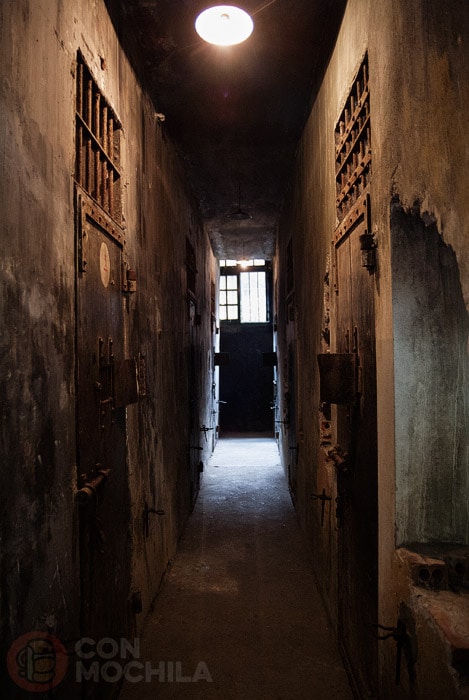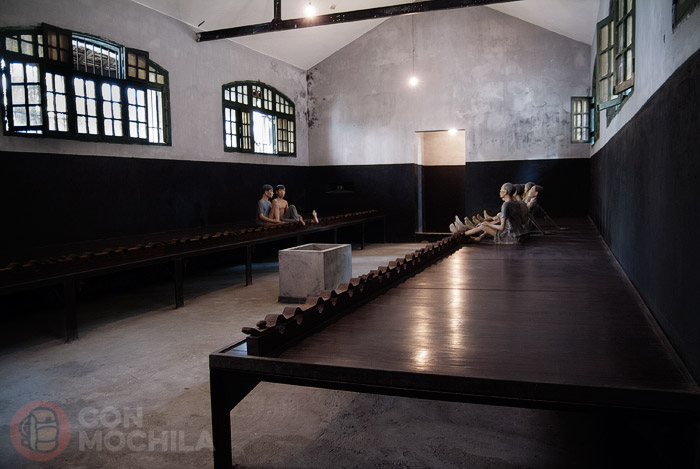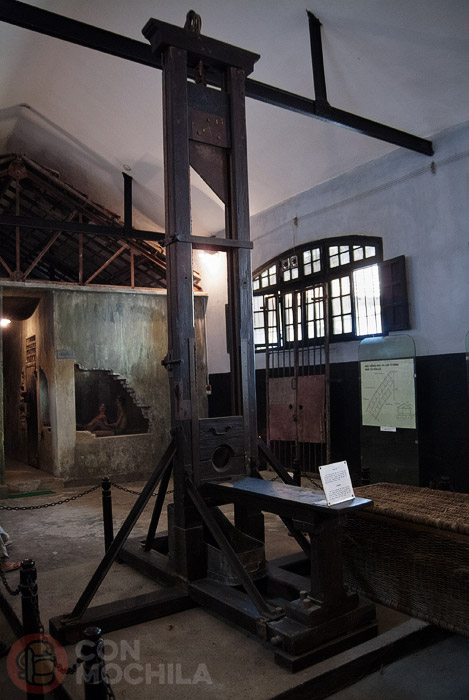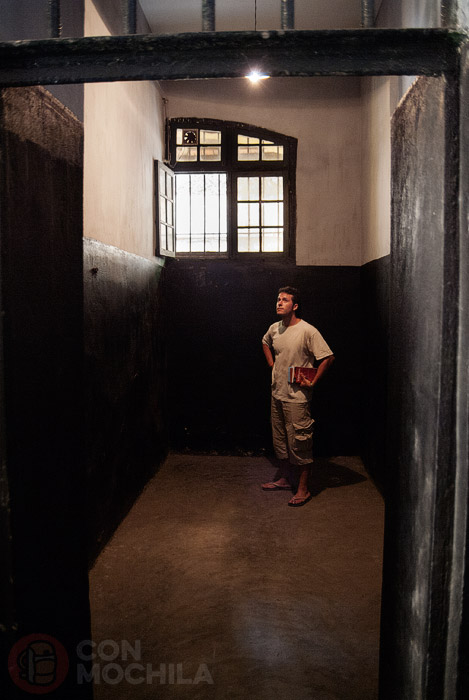Today, only a small portion of it remains due to the construction of the Hanoi Towers. However, this prison was used during the Vietnam War to house American pilots captured by Vietnamese forces. What the pilots ironically called the “Hanoi Hilton” is now a museum displaying images and artifacts related to the torture methods used in Hanoi’s Hoa Lo Prison.

We believe that a visit to Hoa Lo Prison should be on the list of must-see historical sites in Hanoi due to its deep connection to the war history of Vietnam.
If you are in the center of Hanoi, you can reach the museum by walking and using Google Maps for navigation, or you can take a taxi to get there.
The prison was built by the French in 1896 during the colonial era to accommodate 450 inmates, a number that later increased to nearly 2,000. Vietnamese revolutionaries were crammed into overcrowded rooms, lying side by side on wooden bunks with their feet shackled.
Part of the museum focuses on this French colonial period, with exhibits that include photographs and life-sized representations using mannequins to illustrate the harsh conditions.

One of the most striking elements is the imposing guillotine located in one of the torture chambers. Vietnamese revolutionaries were beheaded here, and their heads were placed in wicker baskets. Photographs on the walls document these horrific practices.

Walking through the cells of the Hanoi Hilton allows you to imagine the harsh conditions of this place. High walls, dark interiors, a heavy iron door with bars, and a small window letting in only a sliver of light, this was all that the prisoners once held here could see.

This prison held Pete Peterson, who would later become the U.S. ambassador to Vietnam, as well as a more well-known figure, John McCain, the U.S. presidential candidate in 2008.
McCain was captured after his plane was shot down by North Vietnamese forces and he fell into Truc Bach Lake on October 26, 1967. Some photographs document the moment when the first American prisoner was captured and paraded through the streets of Hanoi like a war trophy.
Finally, a sign next to some photographs of American prisoners reads:
“From August 5, 1964, to January 24, 1973, the U.S. government waged two destructive air and sea wars against North Vietnam. The North Vietnamese military and civilian population shot down thousands of planes and captured hundreds of American pilots.
Despite having committed unspeakable crimes against our people, the American pilots suffered no acts of revenge upon capture and detention but were provided with sufficient food, clothing, and shelter. In accordance with the provisions of the Paris Agreement, our government returned all captured pilots to the U.S. government in March 1973.”
As prisoners of war began to be released from this and other North Vietnamese prisons during the Johnson administration, their testimonies revealed widespread and systematic abuse of POWs…